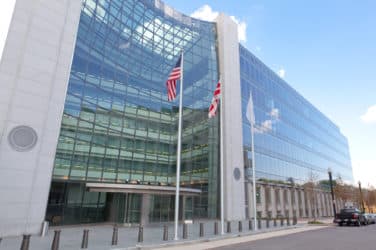Tick tock, tick tock.
With the Federal Reserve set to meet, traders are marking time this week until the announcement of monetary policy and hopefully, some volatility-induced trading once the decision on interest rates is made public. The FOMC is slated to meet Wednesday.
Trading last week was buoyed by dovish remarks made by Fed Governor Lael Brainard which helped the markets move higher earlier in the week but then gave back some gains on higher than expected inflation readings. Higher volatility begat more trading activity with flows described as heavy.
Last week the volume traded on U.S. equity exchanges averaged 7.74 billion shares per day for the week ended September 16, according to Bats Global Markets data. That’s up from an average of 6.44 billion shares in the week ending September 9.
“Investors are taking a look at the next catalyst. I think a potential rate hike is definitely a major catalyst,” said Mike Bailey, director of research at FBB Capital Partners, in an interview with CNBC. He also noted he does not expect the U.S. central bank to raise interest rates next week. “The two main things the Fed looks at are jobs and inflation. On jobs, you can check the box; on inflation, we’re not so sure.”
As has been the case over the last several weeks, the future of interest rates remain the key driver of trading, and with the FOMC scheduled to meet this week, activity is expected to be subdued. Traders that spoke with Markets Media said that Fed Funds futures are now pricing in a 30% chance of a rate hike, up from 26% to start the post Labor Day week.
In other market related news, the Security Traders Association concluded it 83rd annual convention last week in Washington DC. The event was extremely well attended with over 650 equity professionals representing over 200 firms. U.S. Securities and Exchange Commission Chairman Mary Jo white told the audience that her agency and the Financial Industry Regulatory Authority plan to tweak the equities limit up / limit down mechanism to better protect exchange-traded products from price swings like they experienced during the volatility spike of August 24, 2015.
“Orderly trading in an ETP requires a smoothly functioning market for the ETP’s holdings so that market makers and authorized participants can reliably value the ETP’s portfolio,” White said. “If the underlying market becomes disorderly, or if market makers and authorized participants step away from trading, the arbitrage mechanism can be disrupted, and an ETP can trade at prices substantially away from its implied value.”
To address ETP sensitivity to disorderly markets, Commission staff, exchanges, and the Financial Industry Regulatory Authority are assessing what changes they might need to make to the LULD mechanism.
Additionally, Chair White has instructed the SEC’s ETP Working Group to identify and analyze the structure, trading, and use of ETPs.
“The Working Group is considering, among other things: what portfolio characteristics and market structures support effective arbitrage; the roles and practices of market makers and authorized participants; and the effects of the ongoing exchange pilot programs to incentivize trading in less-liquid ETPs,” she said.
Continuing on her theme of market structure enhancements, Chair White also stated that she expects Commission staff to present a revision to Regulation ATS for the Commission’s consideration in the coming months.
Also, Congressman Scott Garrett (R- N.J) told attendees that he was in favor of proposing a pilot program to review the maker-taker pricing model employed many exchanges and other trading venues.
This Week’s U.S. Economic Indicators of Interest:
| Monday | Housing Market Index |
| Tuesday | Redbook Retail Sales
Housing Starts FOMC Meeting Begins |
| Wednesday | FOMC Policy Statement
Fed Chairman Statement |
| Thursday | Chicago Fed National Activity Index
Weekly Jobless Claims Existing Home Sales Leading Economic Indicators |
More on Trading:
- TRADING THE WEEK: Fed Watch Resumes in Earnest
- SEC Eyes Limit Up / Limit Down Tweaks
- Canadian Dark Pools Poised for Growth?






